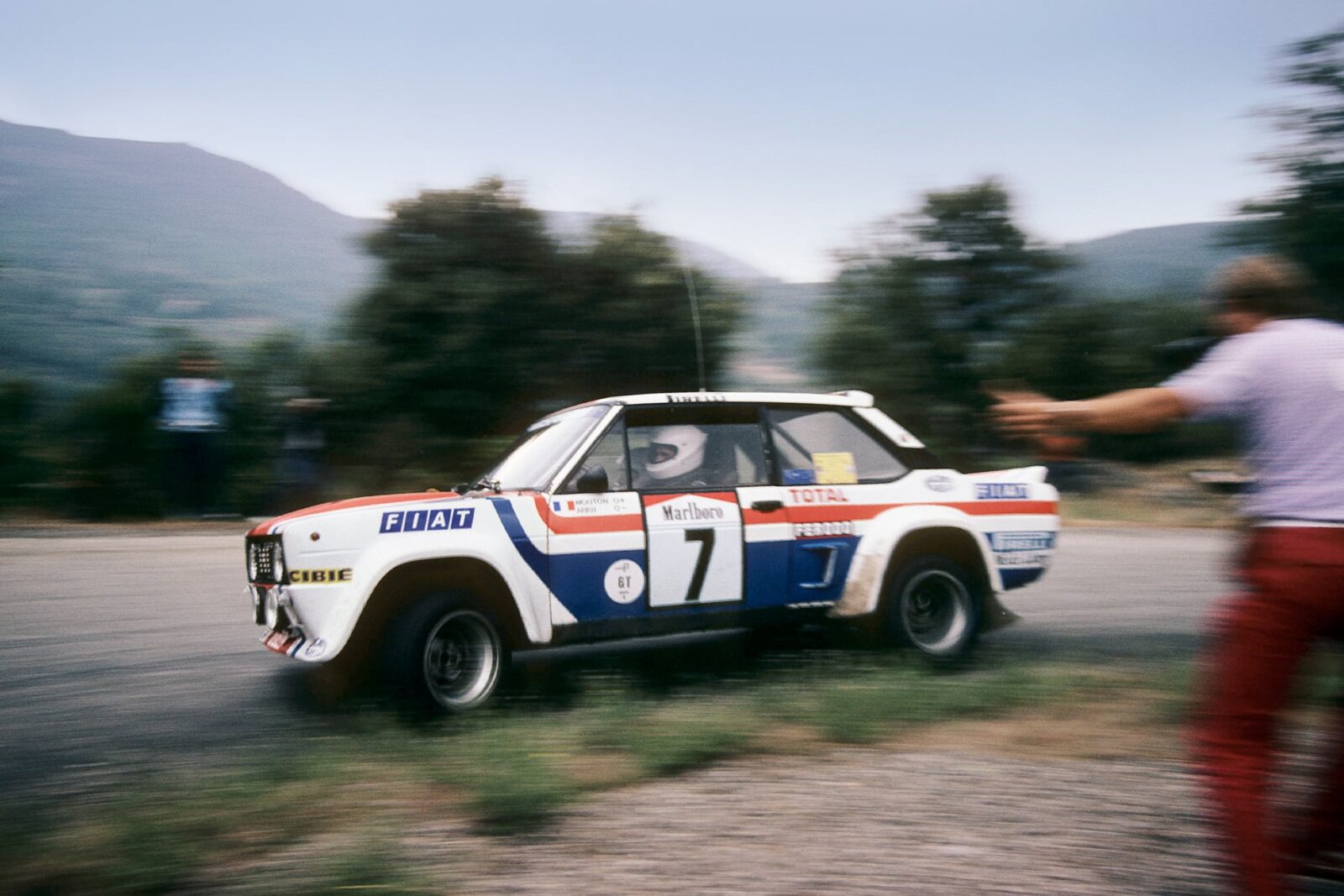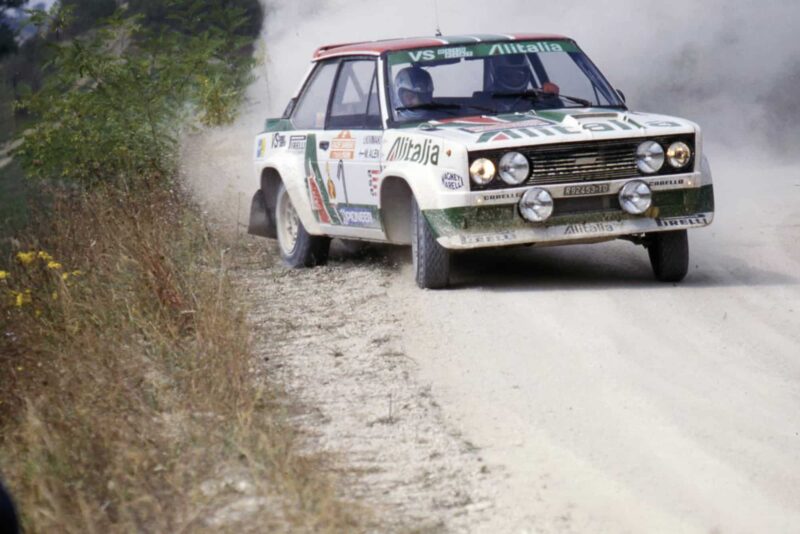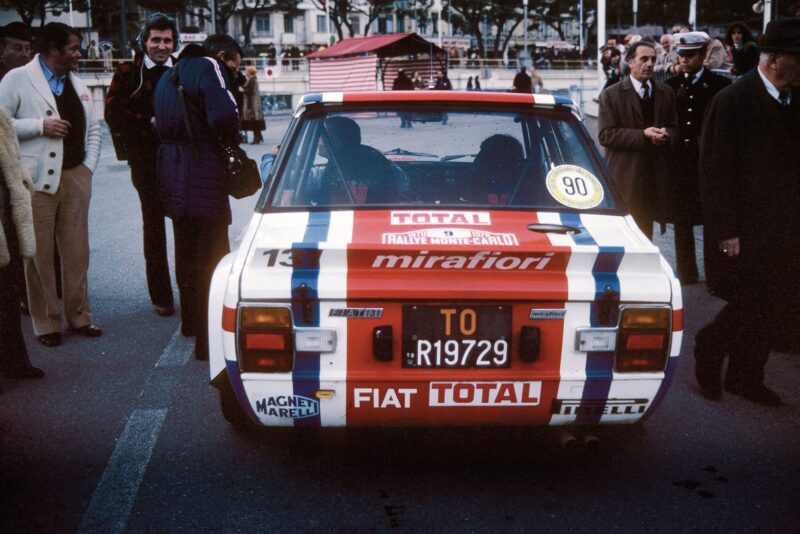Racing car buying guide: Fiat Abarth 131
The first true rally hero to come from a superstar Italian alliance

Michèle Mouton was one star name to handle a 131, even if she wasn’t fond of it, labelling it “a truck, not a car” at first
Back in the 1970s, Fiat was a truly global automotive giant. It employed well north of 100,000 people in Italy, and it was churning out around 1.4m cars per year. It was an integral part
of the Italian economy, but the one thing it lacked was sporting success to back up its lofty position in the automotive world.
That began to change in 1971 when Fiat executives brokered a deal with Italian- Austrian Carlo Abarth to absorb his successful racing business into Fiat’s assets. The deal sparked a union that immediately changed the firm’s fortunes, particularly in the world of rallying, and the Fiat Abarth 131 was the first true product.
It drew on Fiat’s manufacturing power and Abarth’s tuning techniques to produce a winner that humbled much larger, and more powerful rivals.

Alitalia’s famous livery adorned the Abarth 131 from 1978
The 131 was technically the second product, but the first that Abarth could take an active lead on development. Abarth’s first task was to jump on board with the two-seater 124 project, which it had modified for rallying for 1972. The car scored a handful of wins, but more was to come when Fiat demanded its boxy, practical 131 saloon become the new sporting base from 1976. It did have merit as Fiat’s final mass-produced rear-wheel-drive platform, but it needed a fair bit of upgrading. The FIA’s Group 4 rules at the time meant that manufacturers could homologate a fully- fledged World Rally Championship special by producing just 400 road-going examples. Abarth got to work. It ripped off the 131’s solid rear suspension, replacing it with independent MacPherson struts to improve roadholding. The standard 1.5-litre pushrod engine and four-speed gearbox were also lost.
“In 1980, Fiat secured its third WRC title in four years and its last to date”
A two-litre twin-cam unit designed by former Ferrari engineer Aurelio Lampredi was dropped in, accompanied by a 16-valve cylinder head and twin Weber carburettors. The 400 road cars had a handy 140bhp, while the rally variants were said to have 223bhp after Abarth’s work. That was likely Italian bluffing, with most estimating 240bhp+ in full stage trim. A Colotti synchromesh five-speed gearbox followed, as did disc brakes.
Finally, Bertone added wide-arch bodywork, a front and rear wing package, while large side and frontal air dams completed the reworked look. All panels barring the roof and doors were fibreglass, meaning the finished article weighed just 980kg, boasting roughly 143bhp per tonne.
The Abarth 131 made an instant impact, although it only entered four rounds in 1976. Markku Alén won the 1000 Lakes Rally in Finland, beating Ford’s new Escort RS1800, Toyota’s Celica and Saab’s 99.

Jean-Claude Andruet took fourth in Monte Carlo ’79
That proved a warning shot for 1977. Jean-Claude Andruet was second on the season-opening Monte Carlo Rally before Alén won in Portugal. Further victories ensured five wins from a possible 10 for Fiat-Abarth, which didn’t enter that year’s Safari Rally. That record handed Fiat the manufacturers’ world title for the first time in its history. Things got even better when Walter Röhrl jumped ship from Opel to join the revolution from late 1977. He and Alén had a formidable partnership, with Alén claiming the second-ever WRC drivers’ title in 1978, and Röhrl gaining his first world crown in 1980. Fiat had secured its third WRC makes’ title in four years and its last to date.
There would be one final success for the works 131, Alén in Portugal in 1981, before the move to Group B and four-wheel drive from 1982 finally made the 131 outdated. It would retire with a total of 20 WRC victories. The cars also featured great liveries: the yellow-and-blue Olio Fiat colours and Alitalia’s livery from 1978 onwards.
Fiat Abarth 131
Price new N/A
Price now £100,000-£120,000
Engine 1996cc DOHC straight four, four valves per cylinder
Rivals Ford Escort RS1800, Opel Kadett GTE, Toyota Celica 2000GT
Verdict The first car to put Fiat firmly on the sporting map
Market view
A 131 Abarth can make sense for UK owners
The Fiat 131 in normal guise wouldn’t be the sort of car that typically would cross our desks, but the 400 Abarth models are different. With Italian heritage, motor sport pedigree and low production numbers, the 131 Abarth has experienced a steady growth in values.
In the UK, a 131 Abarth sold with Bonhams in 2014 at the Goodwood Revival meeting for a touch under £70,000. However, unsurprisingly the market for these vehicles is predominantly in Italy. Since 2014, prices have steadily risen throughout Europe with current asking prices typically in the £105,000-193,000 range when they come to market.
Although sales are not typically UK-centric, there is ongoing support for UK owners in the shape of a handful of specialists. This means it is possible to source parts from wheel nuts, to service items, through to body panels without too much trouble, making the ownership experience easier.
Other marques from the 1970s with a rally history continue to sell strongly in the UK, and we would expect 131 Abarth examples available here to do the same within a price range of £100,000-120,000.
Robert Johnson,
Classic and Sports Finance
Target deal
Fiat 131 Abarth £100,000 – £120,000
